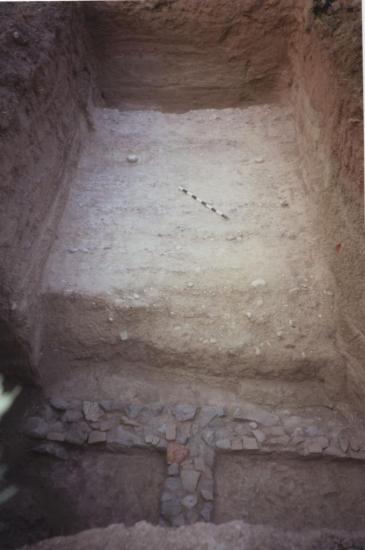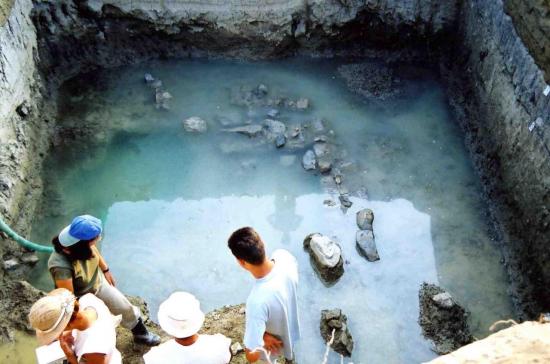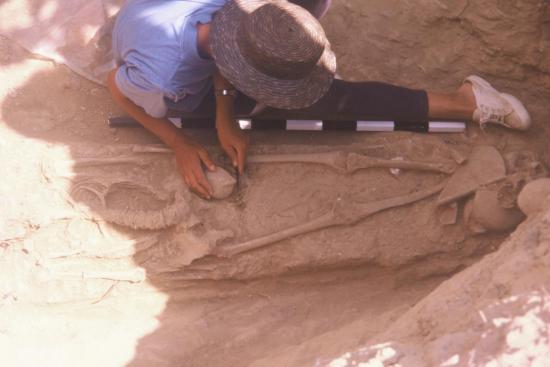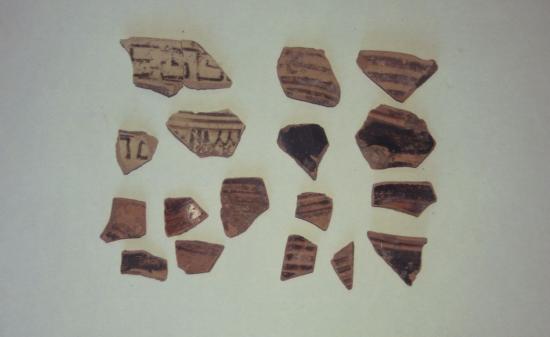PART. 2
The Roman road. In nine trenches between Eliki and Rizomylos, we excavated and revealed segments of a straight Roman road oriented NW-SE. The road is well preserved and shows an average width of 5 meters. According to excavation data, the road was built in the Augustan period when Patras became an important Roman colony. This was almost certain the leoforos described and used by the traveler Pausanias during his journey through the area in the 2nd c. AD.

Submerged Classical ruins. Excavation of trenches in Rizomylos about 150 m west of the EH site, brought to light destroyed Classical walls and parts of buildings buried under thick lagoonal deposits. Associated pottery, coins and other finds date the ruins to the 4th c. BC. Their destruction by an earthquake and consequent burial under lagoonal strata strongly suggest an association of the ruins with the most famous earthquake of antiquity, the 373 BC earthquake.

Roman and Late Byzantine sites. At various locations in the area of investigations between Eliki, Rizomylos and Nikolaiika, we discovered remains of buildings and cemeteries consisting of tile-covered graves dated to the Roman and Byzantine times. In the associated finds are included pottery, glass vases, clay lamps, coins, jewelry and other metal objects.

Mycenaean and Geometric findings. Our excavations in 2006-2008 in the village of Nikolaiika to the east of the EH settlement site, led to the discovery of occupation layers dated on the basis of recovered pottery to the Mycenaean, Early Iron Age and Geometric times. The assembled Mycenaean pottery is of fine quality and includes both unpainted and decorated fragments of vases. Fine quality pottery was also collected from the excavated Geometric layer including fragments belonging to transport, storage and mainly drinking vessels- including the favorite kantharos. In the same layer a circular Geometric hearth was discovered containing lots of carbon. Continuation of excavations in Nikolaiika in 2011 brought to light an unexpected find of high importance for understanding and interpreting ancient habitation in prone-earthquake zones. In one of the trenches excavated across the Helike Fault south of the Mycenaean/ Geometric sitesdiscovered by the Helike Project in the same general area of Nikolaiika in previous excavation seasons, to identify paleoseismic events and study their impact on ancient habitation sites of the Helike zone, were found both the footwall and the hanging wall succession of the Helike Fault crossing and controlling the trench stratigraphy, affecting the ancient occupation of the site. A thick archaeological horizon amazingly rich in pottery of the Late Helladic period was discovered in both the footwall and the hanging wall blocks of the trench. Collected pottery is characterized by a large variety of shapes including both plain and decorated sherds. Other finds besides pottery include animal bones and sea shells, bone and stone tools. We plan to continue investigation in 2012 of this new important location apparently related to the Mycenaean settlement of Helike located in this region.
